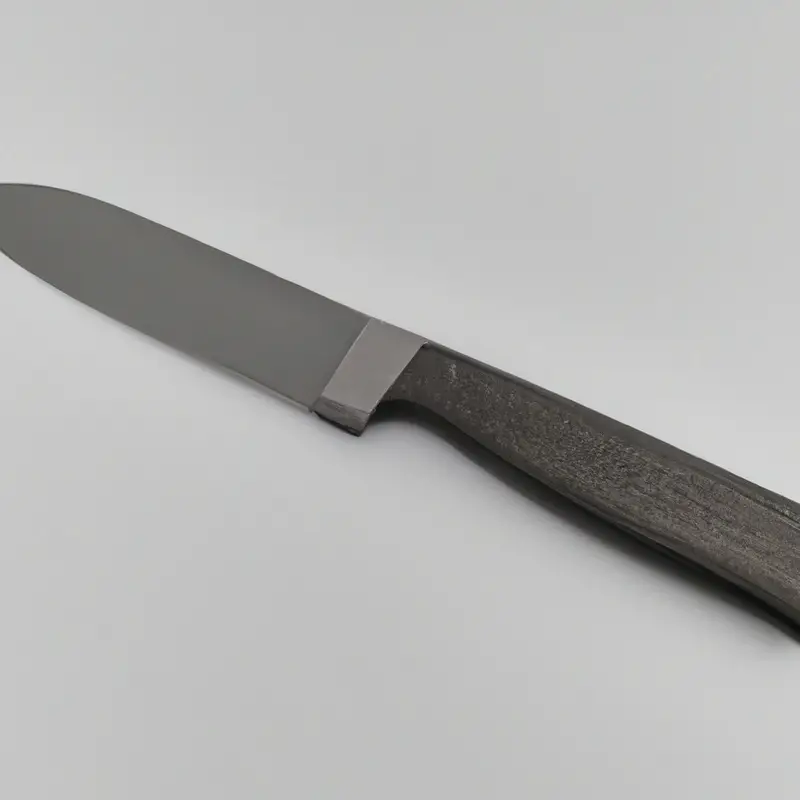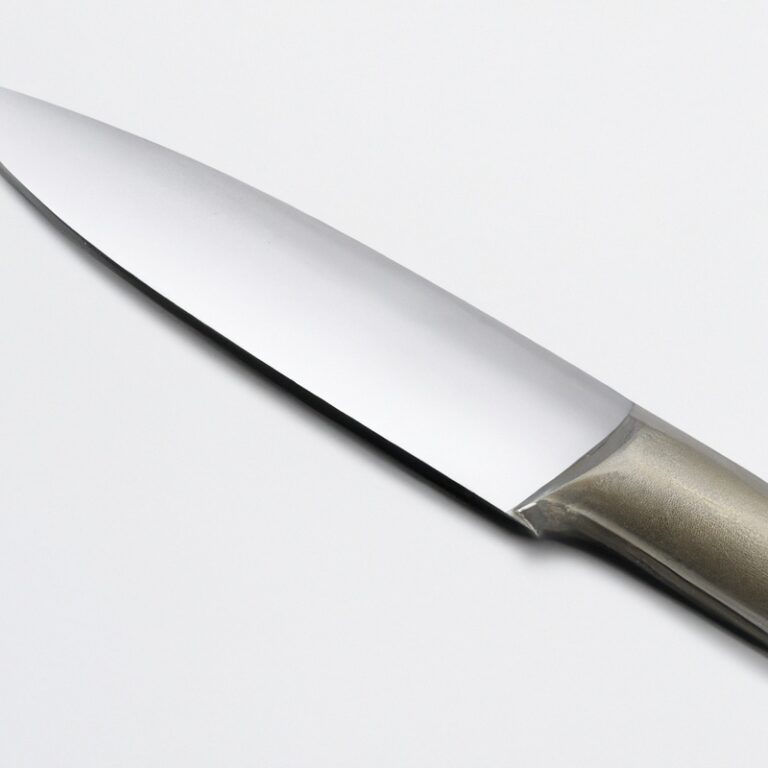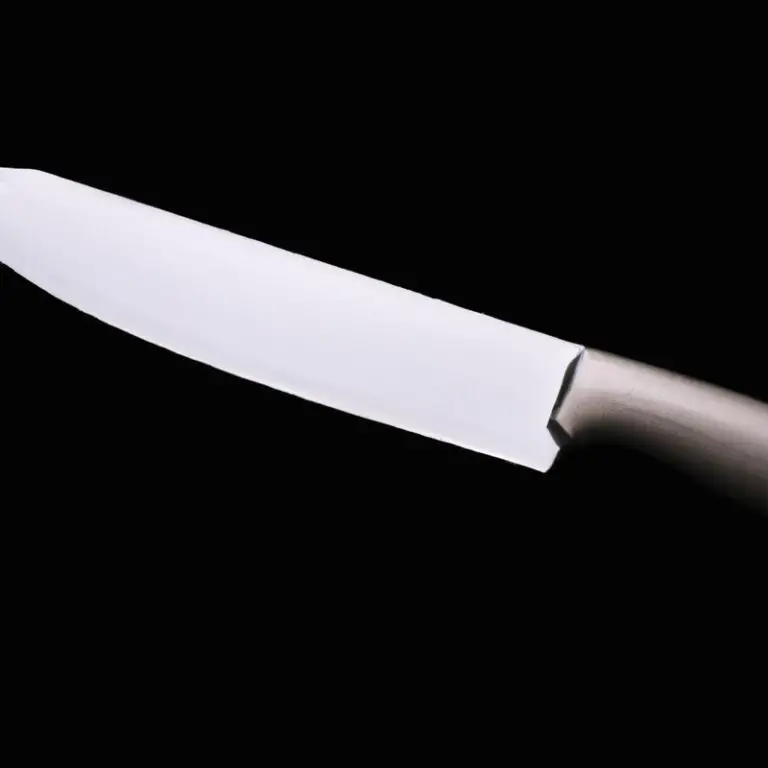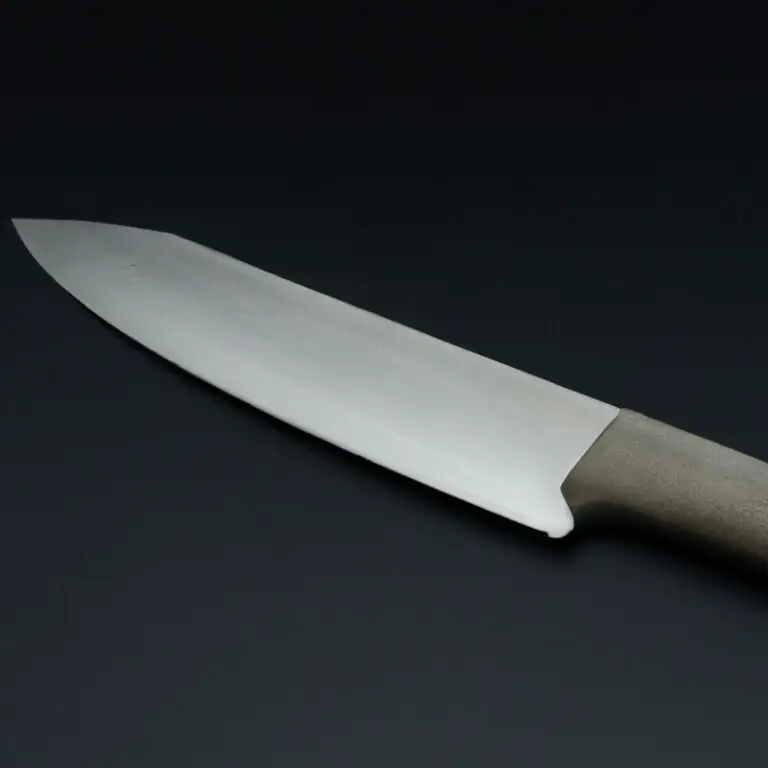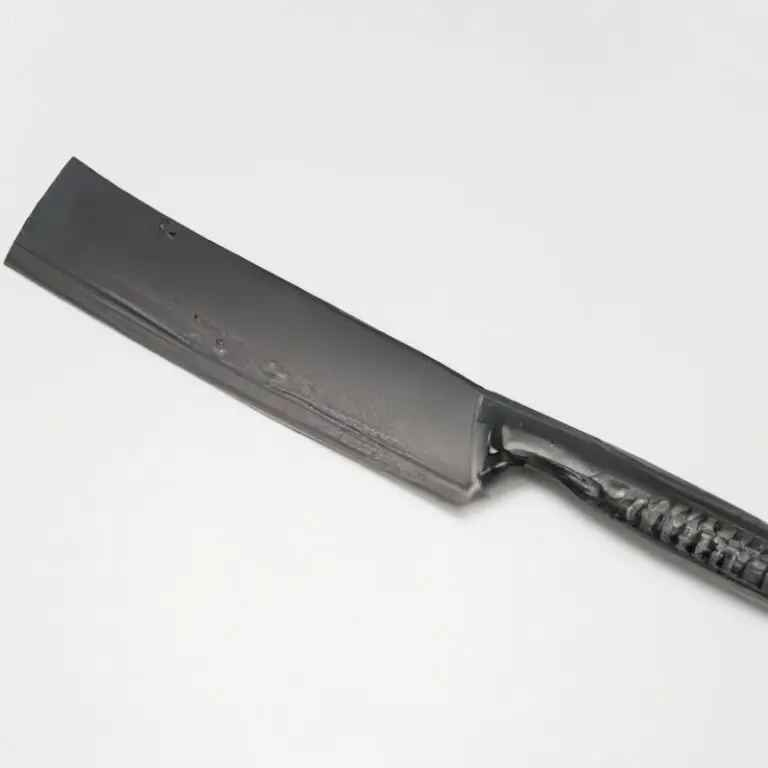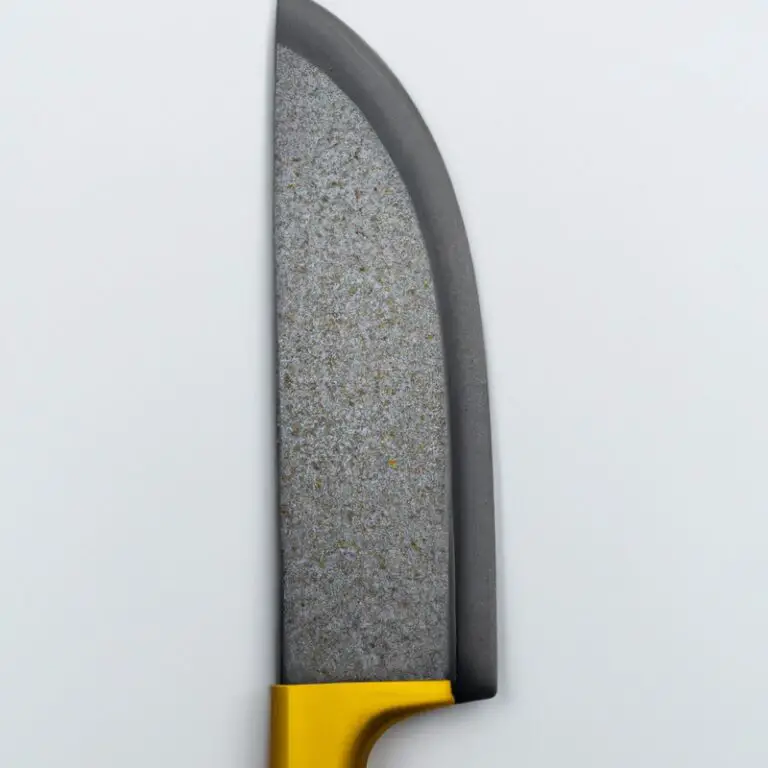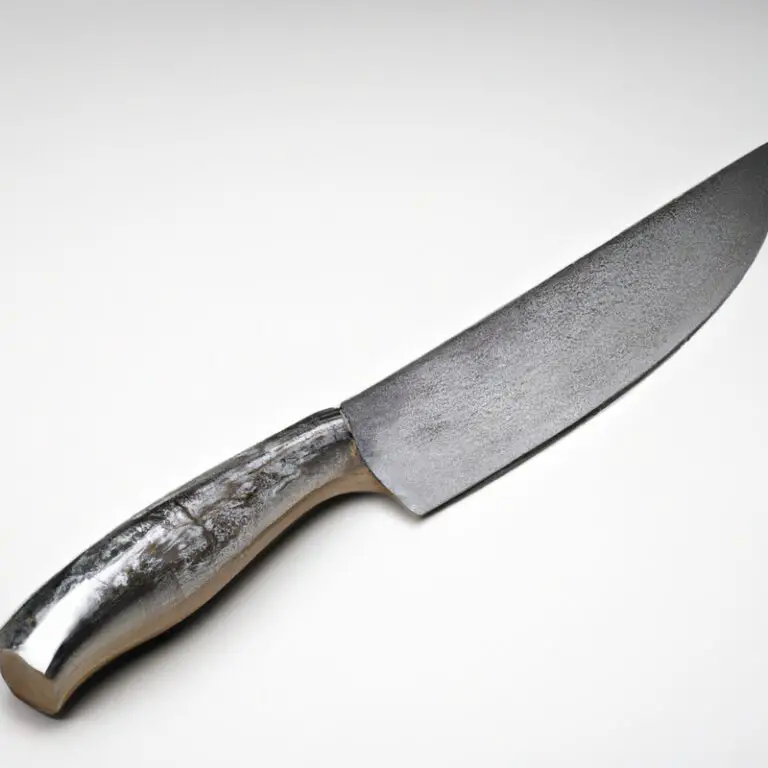How To Organize Gyuto Knives In a Knife Block Effectively? Tips
Key Takeaways:
- Consider the size and shape of your Gyuto knives when selecting a knife block to ensure a proper fit and prevent damage.
- Arrange your Gyuto knives in the knife block by size and frequency of use for easy access and convenience in the kitchen.
- Maintain your Gyuto knives by regularly cleaning them and storing them in a dry, secure location to maximize their lifespan and performance.
- When organizing your Gyuto knives in a knife block, prioritize safety and ensure the blades are securely in place to prevent accidents and injuries.
When it comes to organizing your valuable Gyuto knives, the right storage solution can make all the difference in the world. In this article, I will share some expert tips and best practices for effectively organizing your Gyuto knives in a knife block.
We’ll discuss how to choose the right knife block, how to determine the optimal placement of your knives, and how to maintain a safe and secure storage solution.
You’ll also learn how to care for your knives and avoid common mistakes when organizing them. So, let’s get started on better, smarter knife storage!
| Gyuto Knife | Placement in Knife Block |
|---|---|
| 210mm Gyuto Knife | Top/Center Slot |
| 240mm Gyuto Knife | Top/Center Slot (if available) or Top Right Slot |
| 270mm Gyuto Knife | Top/Center Slot (if available) or Top Right Slot |
| 300mm Gyuto Knife | Top/Center Slot (if available) or Top Right Slot |
| 330mm Gyuto Knife | Top/Center Slot (if available) or Top Right Slot |
Understanding the Importance of Organizing Gyuto Knives in a Knife Block
Organizing gyuto knives in a knife block is important for several reasons. Firstly, it helps to keep the blades sharp and in good condition for longer periods.
When knives are stored haphazardly, they can collide with each other and cause damage to their edges.
Secondly, proper organization in a knife block ensures easy and safe access to knives when needed. By arranging the knives in a specific order, it becomes easier to locate the right one quickly while minimizing the risk of accidental cuts.
Thirdly, a well-organized knife block provides a clutter-free kitchen workspace, making it easier to get things done efficiently.
Also, it helps to extend the lifespan of the knife block by minimizing the risk of damage caused by uncontrolled knife storage. Finally, organizing gyuto knives in a knife block fosters a sense of accountability and responsibility for one’s knives.
By storing the knives in one location, it is easier to keep track of them and maintain them properly.
Overall, investing in a good quality knife block and organizing gyuto knives properly assists in maximizing the longevity and efficiency of the knives while promoting safety in the kitchen.
Criteria for Choosing an Effective Knife Block for Gyuto Knives
When selecting a knife block for your Gyuto knives, it is important to consider the following criteria:
- Size and Capacity: Choose a knife block that allows you to store all of your Gyuto knives and has room for future purchases.
- Material and Durability: Look for a sturdy and durable material, such as wood or stainless steel, that can withstand regular use and potential moisture exposure.
- Knife Slot Size and Shape: Ensure the knife slots are the appropriate size and shape to fit your Gyuto knives securely. Consider whether you want vertical or horizontal slots.
- Ease of Use and Access: Opt for a knife block with easy access to your knives and a design that makes it simple to insert and remove your knives.
- Stability and Safety: It is important to choose a knife block that is stable and secure, preventing it from tipping over and causing injury or damage to your knives.
By considering these factors, you can choose an effective knife block for your Gyuto knives that will keep them organized and easily accessible while also protecting them from damage.
How to Determine the Optimal Placement of Gyuto Knives in a Knife Block
When determining the optimal placement of Gyuto knives in a knife block, it’s important to consider the size and shape of each knife. Larger knives should be placed toward the back of the block, while smaller knives can be arranged toward the front.
Additionally, knives should be placed with the blade facing upward to prevent damage and ensure safety when reaching for a knife.
Knives should also be spaced apart to prevent them from hitting each other and potentially causing damage or dulling the blades. It’s also helpful to arrange the knives in a way that makes them easily accessible for the user.
This can vary based on personal preference and the amount of use each knife receives, but generally, the most frequently used knives should be placed in the most easily accessible slots in the knife block.
Overall, the optimal placement of Gyuto knives in a knife block should prioritize safety, organization, and accessibility for the user.
Tips for Maintaining a Safe and Secure Knife Block for Gyuto Knives
To ensure the safety and longevity of your Gyuto knives, it is essential to maintain a safe and secure knife block. Here are some tips for maintaining a safe and secure knife block for Gyuto knives:
- Always keep the knife block clean and dry to prevent mold and bacteria growth.
- Never overload the knife block with more knives than it can handle comfortably.
- Avoid shaking or dropping the knife block, as this can damage the knives and the block itself.
- Regularly check the fit of the knives in the block and adjust the slots if needed to prevent the knives from wobbling or becoming loose.
- Keep the knife block out of reach of children and pets.
By following these tips, you can maintain a safe and secure knife block for your Gyuto knives, ensuring they remain in top condition and ready to use when needed.
Benefits of Properly Organizing Gyuto Knives in a Knife Block
Properly organizing Gyuto knives in a knife block offers numerous benefits. Firstly, it prevents accidents and injuries by keeping the sharp edges of the knives concealed and secured.
Secondly, organizing the knives allows for easier access, saving time and effort when preparing meals.
Additionally, it helps you keep your tools in good condition by protecting them from damage and corrosion. Furthermore, organizing the knives in a block enhances the visual appeal of your kitchen space and adds a touch of elegance.
Finally, it enables you to keep track of your knives and identify any missing or misplaced pieces with ease, hence helping to maintain a complete set.
How to Clean and Care for Gyuto Knives for Optimal Performance
To maintain the optimal performance of your Gyuto knives, it is important to clean and care for them properly. Here are some tips for effective cleaning and maintenance:
- Wash the knives by hand with warm water and mild soap, then dry them thoroughly with a clean towel.
- Avoid using abrasive sponges or harsh chemicals, as they can damage the blade.
- Sharpen the blade regularly using a honing rod or sharpening stone. This helps maintain the knife’s edge and prevents it from dulling over time.
- Store the knives in a knife block or on a magnetic strip, away from moisture and direct sunlight.
- Avoid placing the knives in a dishwasher, as this can cause damage to the blade and handle.
By following these simple tips, you can ensure that your Gyuto knives remain in top condition for years to come.
Techniques for Storing Gyuto Knives Outside of a Knife Block
Storing Gyuto knives outside of a knife block requires proper handling and organization. Here are some techniques to consider:
- Magnetic Strips: Mounting magnetic strips on the wall is a popular and practical option for storing Gyuto knives safely. This helps to save space and keep knives clean.
- Knife Bags: A knife bag is often used by professional chefs to carry their knives and keep them well-arranged. It is also a handy option for storing Gyuto knives, especially when mobility is necessary.
- Drawer Inserts: An insert fitted to a kitchen drawer can create a safe and secure space where knives can rest. This provides an easy way to access and store Gyuto knives without taking up counter space.
- Magnetic Blocks: Magnetic blocks are an excellent alternative to traditional knife blocks, where Gyuto knives can be placed in a visible and accessible position. It is a space-saving and aesthetically pleasing way to store knives.
When storing Gyuto knives outside of a knife block, it is important to consider the blades’ sharpness and keep them away from other kitchen utensils. Proper maintenance and cleaning of knives are required to prolong their lifespan.
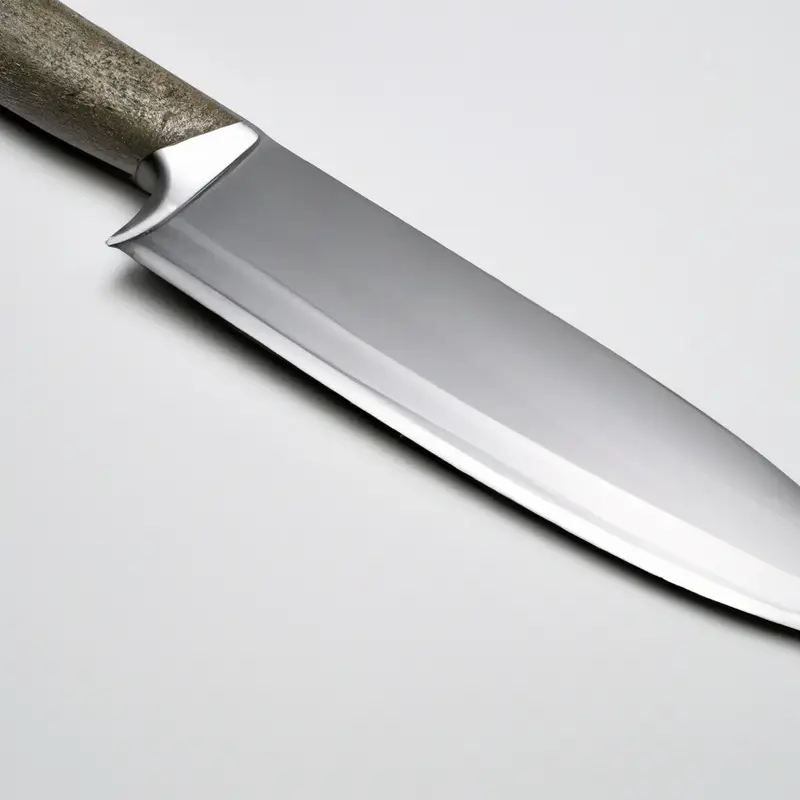
Common Mistakes to Avoid When Organizing Gyuto Knives in a Knife Block
When organizing Gyuto knives in a knife block, there are several mistakes to avoid to ensure the safety and longevity of your knives.
- Placing knives in the wrong slots: It is important to ensure that the blade of the knife fits securely in the slot, and that the slot is appropriate for the size of the knife. Placing a larger or smaller knife in the wrong slot can cause damage to both the knife and the knife block.
- Overcrowding: Overcrowding can cause the knives to rub against each other, leading to blunt edges and damaged knives. Make sure to provide enough space between each knife in the block.
- Storing knives with moisture: Moisture can lead to rust forming on the blades. Ensure that the knives are completely dry before storage.
- Not cleaning the knife block regularly: A dirty knife block can harbor bacteria and germs, which can lead to contamination of food. Clean the knife block regularly to ensure hygiene.
By avoiding these common mistakes, you can ensure that your Gyuto knives are stored safely and securely in the knife block, enabling you to keep your knives in top condition.
Best Practices for Rotating Gyuto Knives in a Knife Block to Avoid Unequal Wear and Tear
To avoid early dulling and uneven sharpening of your Gyuto knives, it’s essential to rotate them regularly in a knife block. The best practice is to use your blades in a circular pattern to ensure even wear.
Start by using the knife in the top left slot and move clockwise after each use.
This method ensures that each blade gets the same amount of use and wear, preserving the sharpness and longevity of the knives. It’s important to avoid using the same knife for extended periods, as this can cause uneven wear and tear.
By adopting the best practice of rotating your Gyuto knives in a knife block, you can significantly improve their performance and prevent any premature dulling or wear.
Innovations in Knife Block Design to Enhance Organizing Gyuto Knives
Innovations in knife block design have led to enhanced organization of Gyuto knives to ensure their safety and longevity. Some knife blocks are designed with slots specifically for Gyuto knives, while others have customizable slots that can be adjusted to fit the knives.
Modular knife blocks allow for flexibility in organizing knives of different sizes and shapes.
Magnetic knife blocks offer a unique modern aesthetic while providing a secure storage solution. Additionally, knife blocks with removable inserts make cleaning easy and convenient.
By investing in a knife block designed for Gyuto knives, organizing and accessing your knives will become a hassle-free task.
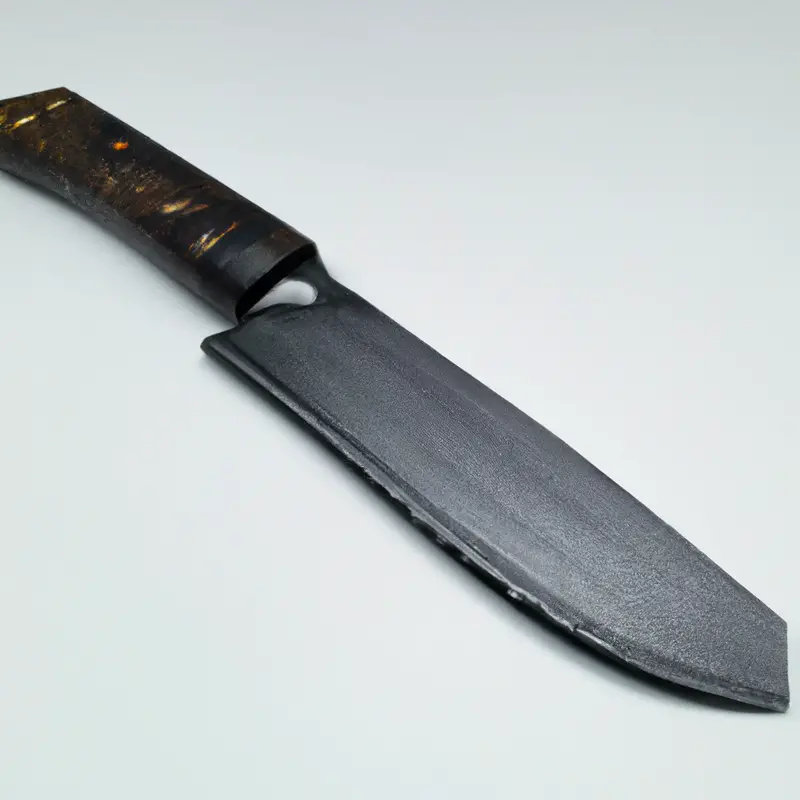
Environmental Factors to Consider When Organizing Gyuto Knives in a Knife Block
Environmental factors play a vital role in the longevity and maintenance of Gyuto knives. When organizing Gyuto knives in a knife block, it is essential to consider the surrounding environment to prevent rusting and corrosion.
High humidity levels can cause the knives to corrode, and exposure to sunlight can cause the handles to fade and deteriorate over time.
Hence, it is advisable to store knife blocks away from windows and humid areas of the kitchen. Additionally, it is crucial to keep the knives dry after use and ensure that they are free from moisture before storing them in the knife block.
By considering these environmental factors, users can extend the life of their Gyuto knives and maintain their quality and performance for years to come.
How to Assess Your Gyuto Knife Collection and Choose the Right Knife Block Size and Type
Before starting to organize your Gyuto knife collection in a knife block, it is important to assess your knives and choose the right knife block size and type. The first step is to determine the number of Gyuto knives you own and the sizes of the blades.
This will help in selecting the appropriate knife block size.
Consider the type of block that best suits your needs. A traditional knife block with slots may be suitable if you have a limited number of Gyuto knives.
However, if your collection is large, you may want to consider a magnetic knife block or a universal knife block with flexible inserts that can accommodate various knife sizes.
It is important to choose a knife block that is made of durable materials and has a stable base to prevent it from tipping over. Wood, bamboo, and acrylic are popular materials.
Another factor to consider is the location where the knife block will be placed.
If it will be stored in a small kitchen, then a compact knife block may be necessary. If there is ample space, then a larger knife block with more slots may be ideal.
In summary, assess the number and sizes of your Gyuto knives, consider a knife block that suits your needs based on size and material, and ensure that it is stable and durable.
Solutions for Organizing Large Collections of Gyuto Knives in a Knife Block
When it comes to organizing large collections of Gyuto knives in a knife block, there are a few solutions that can help keep them safe, secure, and easily accessible. One solution is to opt for a knife block with more slots, specifically designed for larger collections.
Another solution is to consider using average-sized knife blocks with wider slots to accommodate the bulkier blades.
Another option to consider is investing in a magnetic knife block that keeps the blades secured in place without the need for slots. This is an excellent solution for those with a vast collection of knives with varying sizes.
Another innovative option is to utilize a rotating knife block that allows easy access to all knives conveniently.
It’s also essential to consider the angles at which the knives are placed in the block, as this can affect their wear and tear. Using a knife block with a 15-degree angle can help keep the blades sharp and prevent unnecessary damage over time.
Ultimately, it’s important to choose a solution that fits your specific collection of Gyuto knives and meets your needs.
Whether it’s a larger knife block, a magnetic option, or a rotating design, properly organizing and storing your collection will help keep your knives in excellent condition and make them easy to find when you need them.
Portable Knife Blocks: A Convenient Option for Organizing Gyuto Knives on the Go
For those who frequently travel with their Gyuto knives, a portable knife block is a convenient option to keep them organized and protected on the go. Portable knife blocks come in various sizes and styles, including roll-up cases, magnetic sheaths, and compact blocks with slots.
Some even have additional pockets for other kitchen tools.
A portable knife block allows for easy transport and access to your Gyuto knives, making it a necessary tool for chefs who constantly travel. However, it’s important to choose a high-quality and durable portable knife block that can withstand the wear and tear of travel.
Look for blocks made from sturdy materials such as leather, canvas, or hard plastic to ensure your knives stay safe and secure.
How to Create a Personalized Organizing System for Gyuto Knives in a Knife Block
Creating a personalized organizing system for Gyuto knives in a knife block can be achieved in a few simple steps. The first step is to assess your collection of Gyuto knives to determine the number and size of knives that you have.
This will help you select the appropriate knife block size and type that suits your needs.
Next, consider the optimal placement of the knives in the block. Place the knives in a way that allows for easy access and promotes safety.
For example, store larger knives in the back of the block and smaller ones in the front to prevent accidents.
You may also consider labeling and identifying your knives in the block. This can be achieved by adding labels or color coding the handles to make it easy to identify the knife without having to pull it out of the block.
If you have a particular set of knives for specific purposes, you can arrange the knife block accordingly.
For example, you can have a separate block for your carving knives, a separate block for your serrated knives, and another block for your regular Gyuto knives. Creating a personalized organizing system for Gyuto knives ensures that you can easily find the right knife for your particular purpose, and promotes safety by keeping your knives stored securely.
Advanced Techniques for Labeling and Identifying Gyuto Knives in a Knife Block
Advanced Techniques for Labeling and Identifying Gyuto Knives in a Knife Block:
- Color-coded dots or stripes can be applied to the handles of the knives to differentiate them easily.
- Etching or engraving the blade with the knife’s name or purpose can help identify it quickly.
- Attach labels or tags to the slots of the knife block for easy identification.
- Use magnetic strips on the block to securely hold knives and allow for customization of placement.
- Use an app or spreadsheet to keep track of your knives and their placements within the block, allowing for easy retrieval.
Custom Designs and Materials for Gyuto Knife Blocks: Finding the Best Fit for Your Needs
Finding the best fit for your Gyuto knives in a knife block involves considering the custom designs and materials available. When selecting the optimal knife block for your knives, you should look at factors such as material durability, knife block size, and design aesthetics.
Common materials used in making knife blocks include wood, bamboo, plastic, and metal, each with its unique set of benefits and drawbacks.
Therefore, you should select a material that aligns with your preferences and meets your functional needs. Custom designs, such as magnetic strips, vertical blocks, and slotted knife blocks, are also available to meet specific preferences and kitchen designs.
Ultimately, your choice for a custom design and material should be one that meets your quality, durability, and aesthetic requirements.
How to Troubleshoot Common Problems When Organizing Gyuto Knives in a Knife Block
When organizing Gyuto knives in a knife block, there are some common problems you may encounter. Here are some troubleshooting tips to help you avoid these issues:
- Knives are too loose in the block – this can be solved by placing a piece of foam or cork in the bottom of the slot or using a magnetic knife block.
- Knives are difficult to remove – try tilting the knife block slightly or using a knife block that has wider slots to accommodate the handles.
- Knives are getting too close together – make sure you’re not overloading the block and consider rearranging the knives to prevent them from rubbing against each other.
- Block is unstable or wobbly – check if the base of the knife block is even and ensure that the weight of the knives is evenly distributed.
- Block is difficult to clean – opt for a knife block with removable parts or consider using a brush to remove any dust or debris.
By troubleshooting these common problems, you can keep your Gyuto knives organized and ready for use in your kitchen.
Expert Opinions on the Best Practices for Organizing Gyuto Knives in a Knife Block
Experts recommend arranging gyuto knives according to blade size and shape in a knife block. Larger blades should go in the back rows for stability and safety, while smaller blades can be placed in front for easy access.
It is also important to ensure that the knives are securely placed in the block to prevent any accidents and adequately spaced apart to avoid dulling the blades.
Consistently rotating the knives used will help prevent unequal wear and tear. Experts also suggest investing in a knife block with slots that fit the specific shape and size of the gyuto knives.
Finally, always make sure the block is positioned securely on a stable surface to prevent any accidents from occurring.
The Future of Gyuto Knife Block Organization: Trends and Innovations to Watch Out For
The future of Gyuto knife block organization is looking bright, with several trends and innovations already making waves in the market. One of the most significant trends is the use of magnetic strips instead of traditional knife slots in knife blocks.
This provides a more customizable and flexible way of organizing knives, allowing users to place their knives in any configuration they prefer.
Another innovation that is gaining popularity is the use of hybrid knife blocks that combine traditional slots and magnetic strips. This provides users with the benefits of both systems, giving them more options for organizing their knives.
Additionally, knife blocks with built-in sharpeners and honing rods are becoming more common.
This provides a convenient way for users to maintain their knives, ensuring their tools remain in top condition. Another trend to watch out for is the use of sustainable materials in knife block construction.
More manufacturers are using eco-friendly materials, such as bamboo and recycled plastics, to create knife blocks that are both functional and environmentally responsible.
Overall, these trends and innovations are exciting developments in the world of Gyuto knife block organization, and we can expect to see more advancements to come in the future.
Final Verdict
Organizing Gyuto knives in a knife block is crucial for both safety and performance. By considering various criteria, such as size, material, and design, you can choose an effective knife block that fits your needs and preferences.
Proper placement, maintenance, and rotation of the knives will also ensure their optimal functionality and durability.
Understanding the common mistakes and advanced techniques for organizing Gyuto knives can help you avoid problems and customize your organizing system. As a final note, always prioritize the quality and safety of your knives and continuously improve your knowledge and skills in knife block organization.
With dedication and attention to detail, you can enjoy the benefits of a well-organized and reliable collection of Gyuto knives for many years to come.

